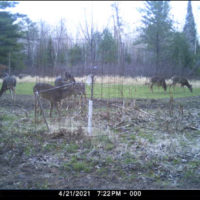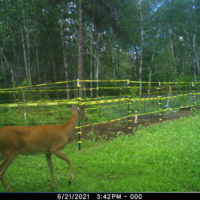It’s finally go time in most of the northern tier states. Time to start food plot work.
So what’s your plan for this year? Anyone trying something new and/or different this year? Trying to figure out how to do something better than last year?
My plan this year is totally different from anything I’ve done in the past. I’m really shaking things up by…well, for the first time ever, I’m doing the same exact thing I did last year.
Honestly, after years of experiments, planting different things in different places at different times, I finally got to a point last year where I was really, really happy with everything. Because this is an “off” year in terms of none of my perennial clover plots are in need of a re-do, I only have to think about the annuals like Eagle and Real World soybeans, and where to put my Brassicas Bender blend come mid-summer. Since I liked everything where it was last year, I’m putting it all right back in the same plots.
I am aware that, of course, you never can get the same growing conditions twice. Every year is different. But I had no specific reason to swap everything around, so I’m not going to rotate anything this year.
There are a few new things, however:
1. I’m trying spring triticale this year as my cover crop for the brassicas plot instead of the usual oat/pea mix. Triticale is a grain that is a cross between wheat and rye. It has excellent protein and durable growth characteristics, so I wanted to see how it works.
2. One of our fellow IDO members is growing the new Enlist variety of Real World Soybeans. This variety is resistant to glyphosate (Roundup), glufosinate (Liberty), and 2,4,D resistant, so weed control options are greatly enhanced for those growers who have resistant weed problems. I am eager to see how this test works and how the soybeans look. Hopefully, they will be every bit as good as the Real World Gen2 Northern soybeans.
3. I’m going to expand my use of annual high-protein ryegrass on areas of plots that are either too low to spring plant or on a few low spots I have that tend to drown out if we have heavy rains and long-standing water. This ryegrass is an annual and it is specifically bred to provide fast growth and high nutrition content for cattle forage. Last year it was an excellent performer in a limited test plot, it was easy to plant, grew thick and fast, and the deer loved it in the late season.
So what’s your plan and what are you doing differently in 2021?


